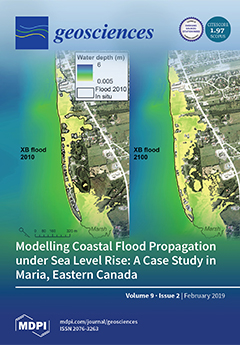Nitrate is a significant water-quality issue in California, the United States as a whole, and the world. Critical to addressing nitrate contamination is understanding the presence and extent of denitrification, and further refining the techniques used to identify nitrate sources. The use and
[...] Read more.
Nitrate is a significant water-quality issue in California, the United States as a whole, and the world. Critical to addressing nitrate contamination is understanding the presence and extent of denitrification, and further refining the techniques used to identify nitrate sources. The use and understanding of nitrate isotopic signatures to identify nitrate sources have advanced tremendously; however, knowledge gaps remain concerning specific fractionation pathways and the role of denitrification in altering source values. Using a large unique database of California groundwater nitrate isotopic compositions, we explored the utility of nitrate–oxygen isotope ratios in determining specific nitrate origins. Lawrence Livermore National Lab (LLNL) samples were supplemented by United States Geological Society (USGS) data to create a dataset of over 1200 dual-isotope results. Methods used at LLNL allowed for the determination of δ
15N-NO
3−, δ
18O-NO
3−, δ
18O-H
2O, δ
2H-H
2O, excess air, major dissolved gases, and excess N
2. Results were examined for the degree to which δ
18O-NO
3− conforms to the model of nitrification in which two atoms of oxygen are sourced from ambient water and one from the atmosphere. Almost 80% of the results fall within one standard deviation of predicted values. However, 19% of samples had significantly higher values, suggesting the preservation of a synthetic nitrate source signature, mixing of sources, or widespread denitrification. Results were examined with respect to general land-use classifications and, while nitrate concentrations followed the expected pattern of being higher in agricultural settings, δ
18O-NO
3−patterns are complicated by application of N-fertilizer in various forms, and subsequent N cycling in the soil zone. We found that the current understanding of oxygen isotope-fractionation mechanisms cannot yet explain the prevalence of oxygen-isotope compositions with higher than predicted δ
18O values, but when paired with related data such as land use and indicators of denitrification, oxygen-isotope compositions of nitrate can help to assess nitrogen cycle dynamics.
Full article





